9C1 Global Studies
Section outline
-
Kia ora...Students and welcome to the first week of school. I trust that you all had a wonderful summer break and are fully charged to begin this terms learning.
Our learning context is: Re-Connections
With this idea in mind, we will explore the different styles of leadership and examine how individuals make an impact in a team.
Our focus will include connections we make in our local communities. To do this we need to examine the different problems that exist in Flatbush (mostly environmental issues), and think of how teamwork can address these issues
Success Criteria: I can/have...
- Researched the cultural identity of Maori and British cultures from the past to the present.
- creatively design a digital cartoon or storyboard that explores early settlers and the Treaty of Waitangi and shows my values that connect with the Treaty.
Activities:
Your task is to research a speech (2019 - 2021) delivered by our Prime Minster Jacinda Ardern and discuss the key messages she has delIvered on this monumental day. What are your views on our Prime Ministers speech.
Watch video on Early Maori cultures in NZ and answer the following questions;
When did Maori people arrive in NZ and from which locations in the world.
How did they arrive here.
Describe the waka.
Discuss the types of tribes found at that time and where did they settle.
Discuss the foods Maori eat and how they collected as well as prepared traditional foods.
Show the cultural dress/ music/ art and dance that is symbolic to them.
What are the languages spoken.Examine the conflict between British and Maori people.Also explain with images the meaning of the treaty of Waitangi.
Do you think Maori cultures identity today is the same from few hundred years ago. Explain. Also show how the "west" has influenced local Maori Identity.
How does this treaty have greater significance to our multi- cultural society today. Think of values and connect your reasons to this.This must be explored in good detail.
Indicate your information on a story board. See example in Google classroom.
Can you express how Re-Connection ties in with the Treaty of Waitangi.
This week is an important one for our country as we celebrate the Treaty of Waitangi on the 6th of February.
Resources
Jacinda Adern 2020 Waitangi Speech
Treaty of Waitangi: What was lost | Stuff.co.nz
The Maori - New Zealand in History
The arrival of Māori | 100% Pure New Zealand
The Treaty in brief | NZHistory, New Zealand history online
Page 1. Creating Te Tiriti o Waitangi
The Treaty of Waitangi | New Zealand Now
Create a story board
Design a Custom Storyboard in Canva
EXPLORE / TŪHURA learning intentions:
- We are EXPLORING...to investigate students personalised immigration story and the vocabulary associated with this idea
- We are EXPLORING...to research the Treaty of Waitangi and its significance for us today in NZ
-
Kia ora...students and welcome to Week 4. For this week we will explore in detail what the context Reconnection and Leadership means. The ideas we will draw reference to include people as leaders in business, politics, sports, communities and as the youth.
However we take a pathway on focusing is on problems in our communities and looking at different roles models that help address these issues. We will focus on our commitment. to help our community thrive and shine.
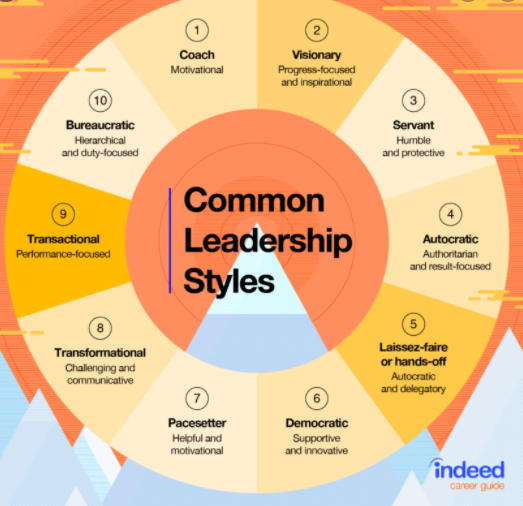
Success Criteria: I can/have...
- Brainstormed ideas that link with Leadership
- Determine what is leadership and team work.
- I have researched what are the different leadership styles and views one each style.
- Connect people that are linked to the various leadership styles
Activities:
- Watch the Video on teamwork
Express why team work is both important and challenging.
Think of the many ideas that link with teamwork as well as leadership.
Do you think there is a place for ME in the concept of Team.
Explain with examples why this concept of me is relevant.Read this document on leadership styles and answer the table below:

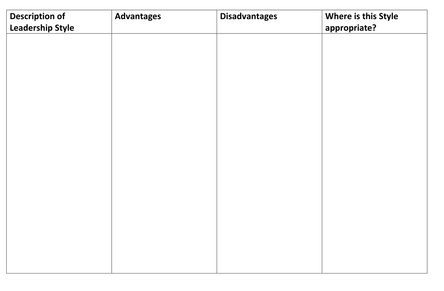
5. See the whiteboard on a range of famous people that have lead a team and contributed to success in the country or globally. Who stands out to you the most based on their style of leadership and why? ( ideas include Oprah Winfrey. Richard Branson, Richie Macaw, Hitler, Mandela, Donald trump, Malala and Greta Thunderburg. Share, pair and discuss your response.
6. Based on the disadvantages of some leadership styles, which leadership would be most recommended to ensure collaboration, effective ME management as well as team success.
7. We will begin to take the key components of leadership and teamwork to understand problems that exist in our community and identify key players that address these problems so that our community is functioning well and thriving. We will also design ideas to overcome issues that occur here.
Homework:
- Education Perfect - Activities set.
-
FOCUS / ARONGA learning intentions:
- We are FOCUSING on defining leadership and the different approaches to leadership.
- We are FOCUSING on developing leadership skills through the study of specific organizational cases.
- We are FOCUSING on utilising and improving skills in critical thinking, analysis, problem solving, and interpersonal communications.
Kia ora...
Success Criteria: I can/have...
- take relevant notes from material selected.
- make concise notes about the person selected.
- discuss key aspects of the selected leader's skills which makes them a key leader using relevant terminology and evidence from the research.
Activities:
Create a Fact File
- Review Google Slide on Note Taking.
- Create a fact file. Watch the video.
- Use the Google Slide Template in the classroom to produce you fact file, make is look amazing and awesome for presentation.
Complete Leadership Styles notes on doc
https://online.mhjc.school.nz/pluginfile.php/204123/course/section/450935/Leadership%20Styles.odt
Homework:
EP - Treaty of Waitangi Review -
FOCUS / ARONGA learning intentions:
- We are IDENTIFYING and EXPLAINING different types of governments.
- We are IDENTIFYING the three components of Maori Authority structure.
- We are EXPLAINING who and how people participate in the democratic process.
- Identify and explain different types of governments.
- Identify the three components of Maori authority structure.
Monday
- Brainstorm what you know about Government.
- Complete the mix ‘n’ match activity using the coloured mix ‘n’ match cards.
- Watch the video in Google classroom.
- Complete the worksheets also in Google Classroom.
- Complete the Definitions document or definitions Learning guide using the knowledge gained from the mix ‘n’ match activity.
-
EXPLORE / TŪHURA learning intentions:
- We are EXPLORING...to investigate what Parliament is and what it does
Lesson 2
Focus question 1: What is Parliament and what happens there?
Build on what the students already know about Parliament. [Alignment]
• Discuss a picture of a session of Parliament or watch footage of Parliament TV and discuss what happens in Parliament.
(If necessary, discuss unfamiliar concepts, for example, “member of Parliament”, “Government”, “representative”, “opposition”, and “legislative”)
• Use a KWL chart to review what they know about Parliament and what they want to find out.
Focus question 2: What is the separation of powers and how does it relate to Parliament?
Build on what the students have learned and already know about Parliament. [Alignment]
• Discuss the different, clearly defined functions of the three branches of government• Design a symbol that represents each of the three branches of government
• Complete a three-circle Venn diagram as a way of consolidating this information and considering where overlap occurs. Underline those descriptions in the Venn diagram that directly involve Parliament
• Discuss how separating the branches of government works to protect the rights of individuals.
New Zealand's constitutional system
The branches of Government
New Zealand has three branches of Government:
The Legislature consists of Members of Parliament and the Governor-General. The role of the Legislature is to make laws (legislation), and to scrutinise the Executive.
The Executive consists of Ministers (both inside and outside Cabinet) and Government departments. The role of the Executive is to decide policy, propose laws (which must be approved by the Legislature) and administer the law.
The Judiciary consists of all judges. The role of the judiciary is to interpret and apply the law. There are two main sources of law: statutes (the laws passed by Parliament) and the ‘common law’. The common law has been developed by judges over the centuries, and may be altered by the courts to meet changing circumstances.
The three branches operate independently from one another, a principle known as the ‘separation of powers’. This principle is intended to prevent abuses of power, as each branch acts as a check on the others.
Judicial independence
Judges are independent from the other branches of Government and from each other. Judges must be free to determine each case according to the law, based on the evidence presented in court. This means that judges must be free from influence from every person including, but not limited to, the Governor-General, Members of Parliament (including Ministers) and Government officials.
Judicial decisions can be appealed to a senior court, as long as the relevant legislation allows this. The Supreme Court of New Zealand is the final court of appeal.
Court staff are also independent when exercising their statutory powers as registrars or deputy registrars of the court, such as deciding whether or not to grant an application for waiver of fees. The decisions of registrars and deputy registrars can be reviewed by a High Court judge if an application is made under the High Court Rules.
The role of the Judicial Conduct Commissioner
The Judicial Conduct Commissioner deals with complaints about the conduct of judges. The Judicial Conduct Commissioner cannot investigate complaints about judicial decisions; judicial decisions can only be reviewed through the appeal or judicial review processes provided for in legislation.
Parliamentary sovereignty
The Judiciary cannot interfere with decisions of Parliament (the Legislature), such as the decision to pass a law. However, the Judiciary can review the actions of the Executive to see whether they acted within the powers given to them by legislation. This is called judicial review.
See Powerpoint and resources on Google Classroom
Homework
- Look up the process on democracy in New Zealand
- Answer the Question 'How do we choose who will represent us?'
-
PLAN & DO / WHAKAMAHI learning intentions:
- We are DEMONSTRATING an understanding of the NZ Government so that we can be INFORMED of the party policies and ideals.
- We are DEBATING the different political parties in NZ so that we can HYPOTHESISE how a political party is developed
- We are APPLYING our knowledge to UNDERSTAND the how our government and parliament is established
NZ parliament structure
To understand the different branches of NZ government and law making institutions
Executive, legislative and Judiciary, house of representative
– 2 minutes
- 10 minutes
Powerpoint with key info and comprehension questions
Final Activity/Homework: Using the information provided create a diagram that shows the structure of NZ government with some information explaining each group and key terms.
NZ electorates and Maori electorates
To be able to explain the history of and make up of the electorates in NZ
NZ and Maori electorates
Use their devices to research the different electorates. They need to find 5 interesting facts about the NZ electorate. They then need to draw the MAORI electorates onto the NZ map
-
FFP & MMP
To understand the how our government and parliament is established
MMP
How government is formed
Voting in a general election is one way that people can have their say about issues that affect their community.
MMP it takes two ticks
Then do the comprehension Slide on Google Classroom
Research how First past the post work, and (for extension kids) how Single Transferrable Vote works. Write this into your books or Google Doc.
Lesson 2
Weekly Quiz - completed in class
Politics and You Project - begin on task 1 and work through the projects.
All tasks due by
Friday 8th April
-
PLAN & DO / WHAKAMAHI learning intentions:
- We are DEMONSTRATING an understanding f the NZ Government so that we can be INFORMED of the party policies and ideals.
- We are DEBATING the different political parties in NZ so that we can HYPOTHESISE how a political party is developed
- We are APPLYING our knowledge to UNDERSTAND the how our government and parliament is established
POLITICS AND YOU
Over the next two weeks we are going to look at the values that shape your political opinion!
We will be studying the position of some of the major parties: National, Labour, Green, NZ 1st and Act. Working your way through the steps you will become familiar with the History of, key personnel, and key positions and policies of each party. First work yourself through the tasks below.
TASK 1: Getting our heads around Government:
Your job will be to present this information in an A3 graphic organiser!
Draw a political continuum from left to right and place the five parties along the continuum and explain why you have done so. (This is what we mean by Left-wing, Right-wing)
What do we refer to when we refer to the cabinet? Name some of the people in our current cabinet?
What is a coalition?
When leaders say “we will discuss that in caucus today” what does that mean?
TASK 2: Party time: This will be your individual project/homework: Present it as a brochure:
Research a famous past Prime Minister! Try and find one the class may not know a lot about!!!
What was his Party?
What were his ideas?
Write a short bio (100-150 words on each)
What actions did he take during his term(s)?
What did people think about him and why?
Include any other interesting information of your choice! Remember specific details!!!
TASK 3: Current Issues: Presentation of choice: For this task you may choose to work in groups:
Research a current/recent political issue. (It must be different to the others in the class)
Some ideas could be: pandemic, homelessness, dirty dairying/waterways, refugee quota, housing crisis, kiwi build, petrol taxes, euthanasia, abortion laws, policing, strikes of midwives, nurses, teachers etc., TPPA (or its new form), foreign companies bottling water, water charges…..THE LIST IS ENDLESS!
Try and find the perspectives of at least 3 parties on this issue.
What are some of the views of the experts and NZ public?
What progress has been made on these issues to date?
What is your position on these issues?
TASK 4: extra for experts:
Politics is often rocked by “Scandal”…. Look at some of the recent newsworthy “political dramas” that have made the news this year: choose 1 or 2 (depending on time)
What party did it concern
What was the summary of the “drama”/what happened
What did the Media say about it?
What outcome was there?
How did the opposition “capitalize” on it?
What were the major “oops” moments that made the situation worse?
How would you have managed the situation differently?
-
EXPLORE / TŪHURA learning intentions:
- We are DISCOVERING the ways in which leadership of groups is acquired and exercised has consequences for communities and societies
Kia ora...
Success Criteria: I can/have...
- Use the interactive powerpoint (16) to complete background activities about Cambodia.
Activities:
- Use the interactive powerpoint to complete background activities about Cambodia.
- mapping:Students will need to out line map on Monsoon Asia. This will be a marked skills activity.
- distant history
- fighting for freedom WWII
- new leader
- change in government
- fighting for power
- Complete map of Monsoon Asia and Cambodia using FACKTS.
Mapping
Revise Mapping skills through powerpoint, in relation to New Zealand
Homework:
Complete NZ Map homework sheet. -
Welcome Back!! It's Term 2.
PLAN & DO / WHAKAMAHI learning intentions:
- We are APPLYING our knowledge to UNDERSTAND the how our government and parliament is established
We will be starting off our Skills Program with Mapping and Grid Referencing this term.
Information is on your google classroom under the title of Mapping.
Lesson 1 - What is a Map? - covered in Term 1
Lesson 2 - Grid Referencing.
Assessment work - we will be working on our Dictatorship vs Democracy assessment for the remainder of the week.
-
PLAN & DO / WHAKAMAHI learning intentions:
- We are APPLYING our knowledge to UNDERSTAND the how our government and parliament is established
This week, we will be working on our Democracy vs Dictatorship assessment, make sure you are ready to create your tombstone.We will have two sessions of Skills next week with Tectonic plates and Volcanoes being our focus.
-
Morena all
Tasks for Wednesday 18th MayRead and complete Different Types of Maps handoutWork you way through Google Slides Mapping Skills - Starter ChallengeComplete the BrainPop assignmentThese tasks are located in your Google Classroom. They are independent activities. -
EXPLORE / TŪHURA learning intentions:
- We are EXPLORING that there is an impact from increasing population rises to sustainability.
- We are EXPLORING how people use resources sustainably and unsustainably.
Wednesday 25th May
7 Billion - Where do you Stand?
Concept:
Dialogue and debate on ethical issues related to population and the environment are helpful in clarifying personal opinions.
Objectives:
Students will be able to: - Articulate their thoughts on statements that deal with ethical issues about population and the environment.
Method:
We will articulate our thoughts about ethical issues related to a population of over seven billion and consider the opinions of our classmates.
Introduction:
Sometimes it is easier to think through an issue if you are asked to “take a stand” on it.
For this activity, you will be asked to take a position and articulate our views on several contemporary issues that are related to a population of over 7 billion and our resource consumption trends.
Procedure:
We will be reading several statements and that position themselves on the contimuum that most closely represents your reaction to the statement. You are free to move to a different sign if/when your opinions change after hearing our classmates’ views.
Remember to show respect for viewpoints different than your own, paraphrase the opinions offered by others before you speak. Stay focused on content.
Statements:
Because our population has reached seven billion people and continues to grow, we need to expand land area available for living and growing food by cutting down the rainforest.
Without reducing rapid population growth, it will be impossible to solve the world’s global challenges.
With more than 7 billion people commuting from one place to another, drilling for more oil is necessary to fuel more cars.
In order to feed our population, we must use pesticides, chemical fertilizers, and genetically modified crops to increase farm yields.
With new technologies used to gather fish, we must have international laws to ensure seafood is harvested sustainably.
The Earth can support over 7 billion people now and will be able to support any number of human in the future.
In an effort to feed a population of over 7 billion, people in developed countries should reduce the amount of meat they consume.
Science and technology will ensure that food production and energy supplies keep up with the demands of a growing population.
With human population over 7 billion, we must protect endangered species habitats by not developing on them for any reason.
There is nothing I can do to help alleviate population pressures.
Governments in countries with fast-growing populations should make laws to limit the number of children that couples can have.
In a real crunch, jobs are more important than environmental quality.
With over 7 billion people on the planet, water pollution is inevitable and we should not waste money trying to prevent it.
Even though I am only one person in 7 billion, I still have a responsibility to keep the Earth healthy; what I do makes a difference.
Automobile makers in this country should be required by law to make all their vehicles fuel efficient, even though the vehicles may become more expensive.
Arable land should never be used for housing, businesses, or other non-agricultural uses because we need all available farmable land to produce food.
Thursday 26th May - Online work
Persuasive Essay
Choose one of the statements and write a short (3-5 paragraph) essay on your stance. You should choose an audience and try to persuade that audience to believe as you do about the issue.
FOCUS / ARONGA learning intentions:
- We are FOCUSING on the relationships and connections between people, across boundaries, and with the environment shape societies.
Earth – Where do Volcanoes Come From?
We are learning to be able to describe Earth’s age and history and explain the structure of the Earth.
Open the Google Presentation and work through the videos and activities on presentation.
- Slide 4 - Click title and watch video and make notes about the history of Earth.
- Slide 5 - click title and watch video, make notes and follow instructions on slide.
- Slide 6 - click title and watch video, make a sketch in your book using colours.
- Slide 10 - rewrite passage and insert correct words in spaces.
Slide 5 - https://video.link/w/z0GGb
Slide 6 -
-
EXPLORE / TŪHURA learning intentions:
- We are EXPLORING that there is an impact from increasing population rises to sustainability.
- We are EXPLORING how people use resources sustainably and unsustainably.
Peopling our Planet
The purpose of this discussion is to explore the impacts that advances in medicine, food and agriculture, and public health and sanitation had on population size.
We will be reading and discussing events in our history that has had an impact on population size.
Open the website link - worldpopulationhistory.org below and follow along -
FOCUS / ARONGA learning intentions:
- We are FOCUSING on the relationships and connections between people, across boundaries, and with the environment shape societies.
DEMOGRAPHICALLY DIVIDED WORLD CONCEPT
We live in a demographically divided world with large disparities in population growth rates and the quality of life indicators that impact those growth rates.
OBJECTIVES
Students will be able to:
• Explore historic fertility and life expectancy trends using online data.
• Compare regions of the world according to fertility and mortality indicators.
• Identify the stages and describe the structure of the demographic transition model (DTM).
• Conduct research to identify and explain a country's stage within the DTM.
SKILLS
Classifying historic events, identifying trends, analyzing data, applying academic knowledge to real-world events, research, defending conclusions
METHOD
In small groups, students explore changes in regional fertility and mortality trends over time and discuss influencing factors.
Students then conduct research on a single country to evaluate development and place it within the demographic transition model.
Finally, the class explores how countries within the same DTM stage compare.
INTRODUCTION
As human populations have developed and grown over time, there has been a steady increase in life expectancy and global population. In fact, starting in the 1900s humans experienced a dramatic drop in death rates and increase in life expectancy, which is largely attributed to factors such as new technologies in agriculture and production, advances in health and sanitation, and lower infant mortality. However, there are drastic differences globally in the quality of life indicators that impact fertility rates and life expectancy. As the global population is projected to be greater than 11 billion by 2100, we need to understand what factors impact lower fertility rates and increased life expectancy.
-
FOCUS / ARONGA learning intentions:
- We are FOCUSING on the relationships and connections between people, across boundaries, and with the environment shape societies.
- We are FOCUSING on how living things are impacted by humans and natural occurrences.
- We are FOCUSING on how people use resources sustainably and unsustainably.
This week we will be looking at sustainability in a global manner.
Learning Outcome:
To understand global variations in economic development and quality of life.
We will be looking at:
- Different ways of classifying parts of the world according to their level of economic development and quality of life.
- Different economic and social measures of development.
- Limitations of economic and social measures.
- Link between the Demographic Transition Model (DTM) and development.
- Causes of uneven development and consequences of uneven development.
Development is.....?
Define in your own words what you think development is.
Activity: How Can We Measure Development?
- View the slides to explain different ways of classifying the nations in the world according to their level of development.
- Use the The Changing Economic World - Indicators Triangular Dominoes to try to match the key terms to your definition.
Activity: What Is the Link Between the Demographic Transition Model (DTM) and the Level of Development?
- Define DTM in your own words and consider the question ‘What is the link between the DTM and the level of development?’
- Read the statements on the next sequence of slides and decide which stage on the DTM each country is at.
Activity: Causes of Uneven Development
- Get into groups of 4. List some reasons why some countries are more developed than others.
- The three main categories that the causes of uneven development can be divided into (physical causes, human causes and historical causes).
- Then organise the The Changing Economic World - Causes of Uneven Development Card Sort into these three categories. Remember that some cards may be in more than one category.
Activity: Consequences of Uneven Development
- View the slides of the main consequences of uneven development (migration, wealth and health).
- Use an atlas or the internet to find out various measures of development for the UK, USA, Ethiopia and Haiti.
- Follow the instructions of the The Changing Economic World - Consequences Activity Sheet and record answers on sheet. Use a red pen to circle to worst country and a green pen to circle to best country in terms of development for each measure of development.
Extension activity
- Find which country in the world has the best value for each measure of development.
- Write down the country name and in brackets write the value of that measure of development.
- Find which country in the world has the worst value for each measure of development.
- Write down the country name and in brackets write the value of that measure of development.
-
FOCUS / ARONGA learning intentions:
- We are FOCUSING on the relationships and connections between people, across boundaries, and with the environment shape societies.
- We are FOCUSING on how living things are impacted by humans and natural occurrences.
- We are FOCUSING on how people use resources sustainably and unsustainably.
Wednesday 22nd June
Learning Objective: To understand the significance of World Overshoot Day.
Success Criteria:
- • To understand what an ecological footprint is.
- • To identify the positive and negative effects on our ecological footprint.
- • To utilise the thinking hats approach to decide if we should do something about World Overshoot Day.
Starter
Look at the slide below.
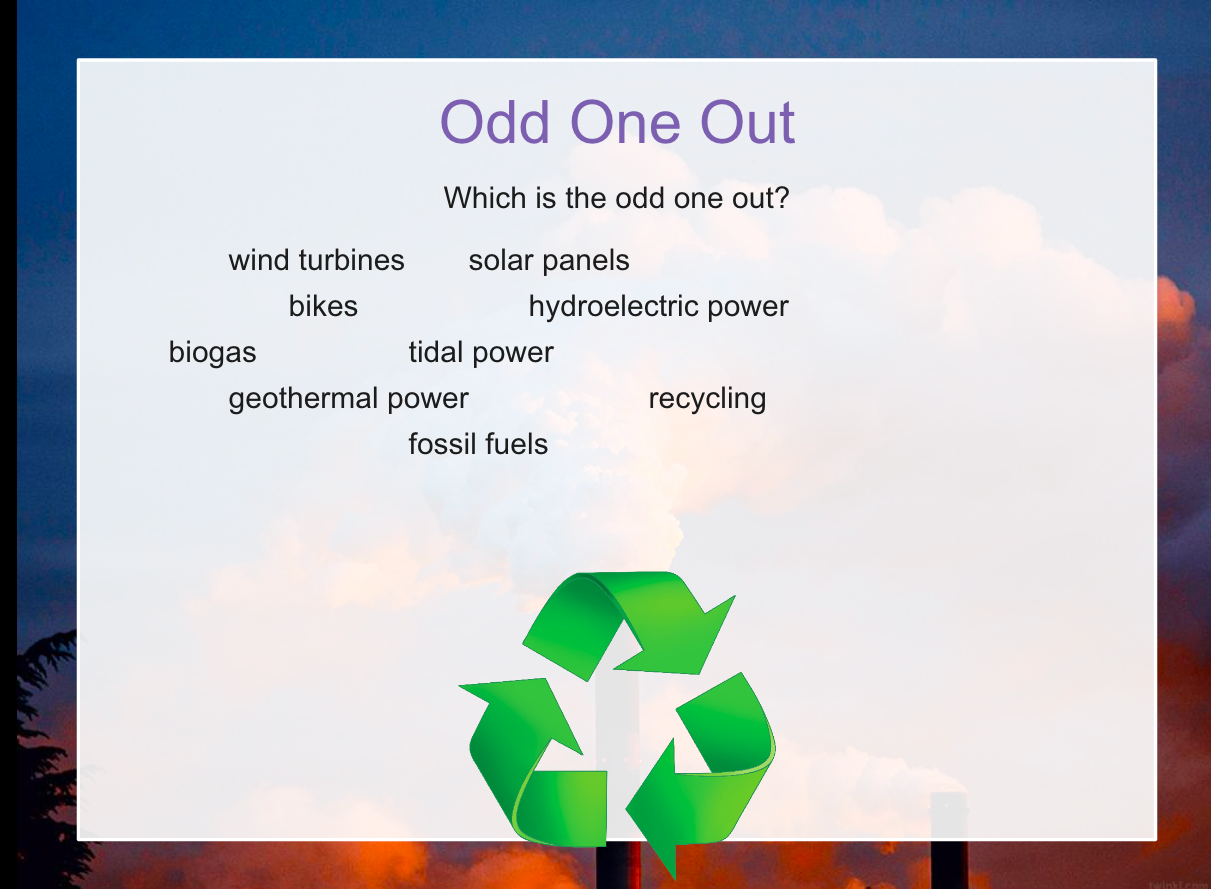
Take a minute to think about the correct answer.
You should be able to justify it. Share your ideas with a partner or with the rest of the class.
Main Activities
What Is an Ecological Footprint?
Introduce what an ecological footprint is. Open the World Overshoot Day Factsheet in Google Classroom. Watch the videos on Google Classroom and fill in their sheet with any information that you think might help them formulate an opinion about this statement.
Card Sort
In this activity, students will consider the positive and negative effects on our ecological footprint. Distribute the Ecological Footprint
Card Sort and ask them to sort the cards into the two categories (positive and negative effects on our ecological footprint).
What Is the Significance of World Overshoot Day?
Use the PowerPoint to explain what World Overshoot Day is and how it is significant for the future of the planet. For more context, students may watch the videos on Google Classroom.
Fill in their World Overshoot Day Fact Sheet whilst watching the videos.
Thinking Hats
Consider the statement ‘We should try to do something to prevent World Overshoot Day.’ In groups of five, share a copy of the Thinking Hats Activity Sheet. Each person in your group will have a different thinking hat and different set of questions. You should only answer the questions for your thinking hat.
-
EXPLORE / TŪHURA learning intentions:
- We are EXPLORING the current situation in Ukraine and its historical origins;
- We are ANALYZING political cartoons that depict the Ukrainian crisis;
Analysing Political Cartoons
TASKS
- Read the information below.
- Watch the video on Google Classroom "How to Analyse a Political Cartoon"
- Complete tasks on Assignment in Google Classroom - Ukraine Political Cartoons.
Cartoons can sometimes make a serious point. Benjamin Franklin’s 1754 “Join or Die” began the use of political cartoons. These visuals have been important in history by informing illiterate citizens and conveying a point of view on a political issue. Cartoonists, with a single picture, could insult enemies, celebrate allies, change people’s minds on important issues, and be humorous enough to make an impact on the public’s view. Political cartoons bring humor and exaggeration to past and current issues. I tell my students political cartoons are pictures with a point. We can provide students with the tools and questions they can use to decode and understand political cartoons.
Benefits of using political cartoons
Political cartoons are in most of today’s textbooks. However, even adults can have a hard time decoding the meaning. Providing opportunities for students to learn to decipher and understand political cartoons can:
- Give a more personal view of historical events
- Provide opportunities to develop critical thinking skills
- Encourage building connections to the past
- Provide a picture which can be less intimidating than text
- Illustrate contemporary attitudes toward key events in history
- Allow practice in identifying persuasive techniques/bias
Ways to analyse political cartoons
Political cartoons allow students to examine the many persuasive techniques cartoonists use to change people’s minds. The most used persuasive techniques are symbolism, exaggeration, labeling, analogy, and irony. Students can learn to spot these techniques. There are a lot of people out there trying to change our minds. By knowing how they’re doing it, we can teach students to make informed decisions.
Symbolism - Simple objects, or symbols, can stand for larger concepts or ideas. Have students identify any symbols and what they are intended to represent.
Exaggeration - Physical characteristics of people or things may be exaggerated to make a point. Students should look for these exaggerations and why the artist chose to exaggerate these features.
Labeling - Sometimes objects or people are labeled to make it obvious what they stand for. When students see labels, ask them to decide why the artist decided to add a label.
Analogy - By comparing two different things, cartoonists can help their readers see a different point of view. If students discover an analogy, have them decide what the analogy is comparing and the point the comparison makes.
Irony - Irony is the difference between the ways things are and the way things should be or are expected to be. Students should decide if the irony expresses an opinion on the issue.
Questions to ask while analysing
- What point is the cartoonist trying to make?
- What techniques, such as symbols, words, caricature, exaggeration, and irony, communicate the message?
- Which method of making a point is most effective? Why?
- How would the cartoon be different if it had been created by a cartoonist with a different point of view?
- What conditions might have given rise to this cartoon?
- What groups might it have appealed to?
- What values does the cartoon express?
-
EXPLORE / TŪHURA learning intentions:
- We are EXPLORING that there is an impact from increasing population rises to sustainability.
- We are EXPLORING how people use resources sustainably and unsustainably.
- We are EXPLORING the current situation in Ukraine and its historical origins;
- We are ANALYZING political cartoons that depict the Ukrainian crisis;
Monday
Skills Lesson
What is a population pyramid?
A population pyramid is a type of bar graph that shows the proportion of males and females and the proportion of people in different age groups.To be able to identify key features of a population pyramid.
To be able to describe what population pyramids show.
To be able to explain population pyramids and compare LICs and HICs.
- Discuss what the key features of these population pyramids are?
On your sheet try to identify the key features of your population pyramid from what we have discussed.
Complete the Homework Task about anomalies in population in Rwanda and Bahrain
With your partner complete the second section and sketch this pyramid.
Wednesday
Read through the articles added to our Google Classroom and answer the questions on the end of the assignment sheet.
Station 1: What was the Cold War?
Station 2: Why did Russia invade Ukraine?
Station 3: Who is Vladimir Putin?
Station 4: What has been the effect on Ukraine?
Station 5: Who is Volodymyr Zelensky?
Station 6: How has the west responded?
Station 7: What are different perspectives of the conflict?
Station 8: What happens to Ukrainians fleeing?
Discuss with your table: What do you think of the world’s response to the Russian invasion?
Assessment Writing: Why did Russia invade Ukraine?
-
EXPLORE / TŪHURA learning intentions:
- We are EXPLORING the problem and the End User
- We are IDENTIFYING the characteristics of the circular economy
Designing for Climate Action! A Circular Economy Project
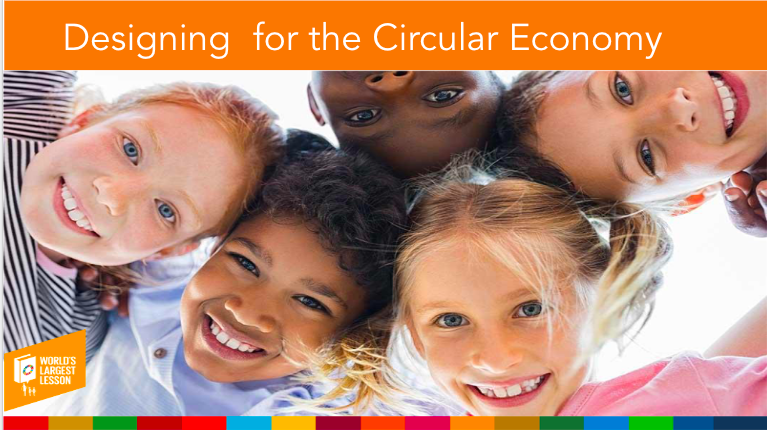
Activity 1: Exploring the Problem & the End User
Learning Objectives
Today we are going to :
Explore and formulate the problem
Activate prior knowledge and prepare for new concepts and skills related to the circular economy and climate action
Design Skill:
- Empathy – We are learning to empathise with others
- Thinking in all directions – We are learning how to generate diverse and original ideas by associating and imagining
The Design Thinking Process
Design thinking supports you to develop your voice, choice and ownership of solutions you come up with based on real problems. This enhances your knowledge and 21st century skills to participate proactively in society.
Let’s listen to the podcast on Google Classroom as an introduction to design thinking.
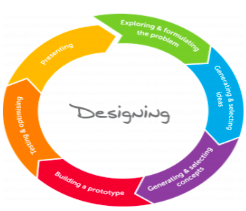
The Ripple Effect
With you at the centre, your actions can make waves that affect change on a global scale.

How can one action connect to global change?
Can these objects be…….? (on Slides)
- reused
- regifted
- refuse to use if it’s a single use object
- recycled
- repaired
- remanufactured
- repurposed
- biodegraded
Brainstorm what they could make from the objects in the image.
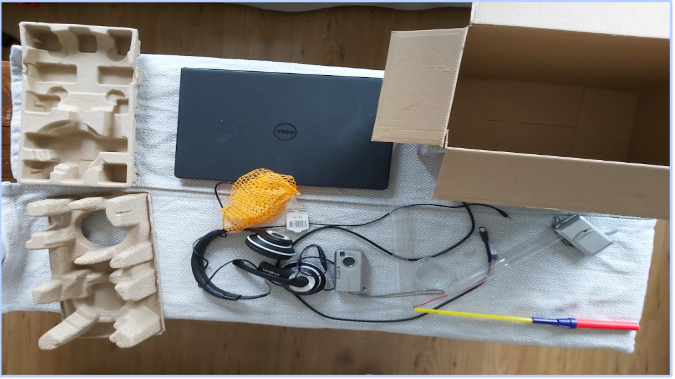
We are going to learn about the circular economy.
What might this mean? This lesson, we will be thinking about this question: How can I reuse, repair or repurpose an object for the wellbeing of people from my school community?
Watch the circular economy video on Google Classroom

Talk about what you understand as the circular economy after watching the video.
How does designing for the circular economy help to fight climate change?
In this project we will be focusing on: Reuse/ Repair/Repurpose and in the following lessons you will design something answering this question:
How can I reuse / repair / repurpose an object in a different way for the wellbeing of the people in my community?
See if you can make a link to the Global Goals.
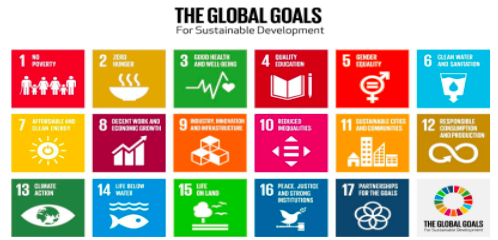
How could answering this question also help to achieve the Global Goals? Why might it help them to tackle Goal 13 Climate Action?
Your design will be for a specific group of users that share similar characteristics.
You need to decide which group they will be designing for: e.g. teachers/parents/students/ babies/their year group.
You will have to imagine, draw and describe a fictional person using all the details from the “Persona” worksheet.
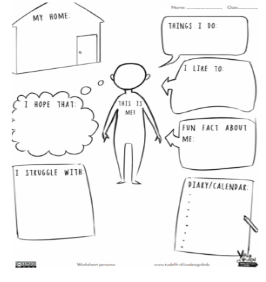
Use the worksheet of the persona and answer the following questions:
● Where does he/she live?
● What does he/she like to do?
● What does he/she not like doing?
● Any fun facts about your persona?
● What does he/she hope to do?
● What does he/she struggle with?
– Link to the design problem
-
EXPLORE / TŪHURA learning intentions:
- We are EXPLORING the problem and the End User
- We are IDENTIFYING the characteristics of the circular economy
- We are QUESTIONING the idea of sustainable cities and communities.
What are the Sustainable Development Goals?
Sustainable Development Goals (SDGs) are an intergovernmental set of 17 goals with 169 targets covering a broad range of sustainable development issues including ending poverty and hunger, improving health and education, making cities more sustainable, combating climate change, and protecting oceans and forests.
Half of humanity—3.5 billion people—live in cities today, and this number will continue to grow. Because the future will be urban for a majority of people, the solutions to some of the greatest issues facing humans— poverty, climate change, healthcare, education— must be found in city life. Learn about these connections in this resource and how we can take actions both locally and globally.
SDG 11: Sustainable Cities and Communities
More than half of the world’s population now live in urban areas. By 2050, that figure will have risen to 6.5 billion people – two-thirds of all humanity. Sustainable development cannot be achieved without significantly transforming the way we build and manage our urban spaces.
The rapid growth of cities in the developing world, coupled with increasing rural to urban migration, has led to a boom in mega-cities. In 1990, there were ten mega-cities with 10 million inhabitants or more. In 2014, there were 28 mega-cities, home to a total 453 million people.
Extreme poverty is often concentrated in urban spaces, and national and city governments struggle to accommodate the rising population in these areas. Making cities safe and sustainable means ensuring access to safe and affordable housing, and upgrading slum settlements. It also involves investment in public transport, creating green public spaces, and improving urban planning and management in a way that is both participatory and inclusive.
7 Facts about Cities:
- Tokyo is the world’s largest city, with the greater Tokyo area housing about 38 million people
- By 2030, almost 60 per cent of the world’s population will live in urban areas
- 95 per cent of urban expansion in the next decades will take place in developing world
- 828 million people live in slums today and the number keeps rising
- The world’s cities occupy just 3 per cent of the Earth’s land, but account for 60-80 per cent of energy consumption and 75 per cent of carbon emissions
- In 2017 the cities with the highest Quality of Living were Vienna and Zurich, at the bottom of the list were Dhaka (Bangladesh), Sana (Congo), Bangui (Central African Republic) and Baghdad (Iraq)... Find out Why: Mercer Quality of Living Survey, 2017 https://www.mercer.com/newsroom/2017-quality-of-living-survey.html
- But the high density of cities can bring efficiency gains and technological innovation while reducing resource and energy consumption sustainable cities and communities education resource
Sustainable Development
What is it?
‘Sustainable development’ can be defined as ‘development which meets the needs of the present without compromising the ability of future generations to meet their own needs.’
The challenge for anyone who wants to live ‘sustainably’ is to define what are our ‘needs’...
• how do my ‘needs’ today take from future generations?
• how am I helping future generations to meet their needs?
Dawn Raid Apology
Source Analysis
This advertisement for the National Party, prepared by the American cartoon firm Hanna-Barbera, was played during the 1975 election campaign. It reflected an increasing hostility to immigrants from the Pacific as unemployment rose in New Zealand following the 1973 oil crisis.
Task: After watching the video, answer the questions below
- This advertisement shows racist stereotypes of Pacific Islanders. What racist stereotypes are evident in this advertisement?
- Why do you think the National Party would have released this advertisement? What were they hoping to do? Why do you think they believed this strategy would work?
- What do you think the impact of this advertisement would have been on immigrants from the Pacific at the time? How might they have felt?
Task: Watch this video and write a short explanation about how the pen highlighted the racism faced by Pasifika peoples in the 1970s
RESPONSE
Black Panthers and Polynesian Panthers
On the Slide Presentation is some images of the Black Panthers - a protest group from the United States from the 1960s
Task: Find out 5 key facts about the Black Panthers and what they were protesting for
On the next slide are some images of the Polynesian Panthers
Task 1: What similarities do you see between the images of the Polynesian Panthers and the Black Panthers?
Task 2: Why do you think activists wanting to protest the Dawn Raids modeled themselves on the Black Panthers?
Task 3: Select one of the photographs. What can you see. If you were there, what sounds might you hear? If you were a reporter, whom would you want to interview? What questions might you ask?
Task 4: Imagine you are a member of the Polynesian Panthers - write a diary entry explaining your motivations for protesting and what change you hope your actions will bring. Make sure you support your ideas with historical evidence.
Other Apologies….
Task 1: What other formal apologies has the New Zealand government/crown made to groups of people and/or for specific events?
Task 2: For one of the apologies you have identified above, write a short paragraph explaining what actions the government had taken historically that saw them needing to make a formal apologyEXTENSION: The Value of an Apology?
Read this article: https://www.stuff.co.nz/national/politics/125524870/the-dawn-raids-explained-what-drove-the-government-to-target-pasifika-people
A Dawn Raids apology is worthless without an overstayer amnesty, says 'Tongan Robin Hood'
“Fakan’aana’a-ki-Fualu says without an amnesty, the apology will lack "a real meaning ... otherwise Polynesians are still being treated as second-class citizens, just like how we were treated by New Zealand's racist immigration policies of the 1970s”.
It was culturally unacceptable for an apology not to come accompanied by something. “What is an apology if it comes with nothing at all?”
Task: Do you agree or disagree with the above statement and the point of view shown in the article? Write a paragraph which evaluates the value of a government apology - do you believe that the apology goes far enough in addressing the treatment that the Pasifika community faced in the 1970s?
-
EXPLORE / TŪHURA learning intentions:
- We are EXPLORING the problem and the End User
- We are IDENTIFYING the characteristics of the circular economy
- We are QUESTIONING the idea of sustainable cities and communities.
Discuss in groups and make notes on sheet – ‘What are the biggest problems faced by people in our community/ country /worldwide?”
Think from the perspectives of others so for example you could say “we need you to think like you are the president!”
In pairs, try and identify some of the biggest problems facing their community, their country, or the world.
Check out The Global Goals,
Which goals relate to the problems they have identified.
Watch video - Lesson 1
https://vimeo.com/worldslargestlesson/english-malala
Read Heroes for Change comicThe comic has two main elements:
❖ Introduction to the creation of the SDGs — why and how they were created at the United Nations
❖ Call to action:
1. LEARN ABOUT THE GOALS — find out what they are and why they are important.
2. TELL EVERYONE — spread the word and make them famous so they can succeed.
3. DO SOMETHING — share your “superpower”, you interest and talent in your community
to help to achieve the goals.
Questions for discussion:
1. What are the United Nations and why are they important?
2. Why is it important for countries around the world to share goals?
3. What have you learned about the goals?
4. Why is it important for governments and individual people to know the goals?
5. Why is it important for everyone to know about the goals?
6. How can you help spread the word about the goals? What are some ideas?
7. What things can you and your friends do to help in your community to serve the goals.
Consider that each person has super powers to help others, and when joined
together, all those individual powers combine to make the ultimate super power: to create true global
change,
Read The Planet and 17 Goals
The comic has one overall theme: “we’re all in this together!”
Questions for discussion:
1. What are the problems that each goal is aiming to fix/address?
2. How do these problems affect people and the planet?
3. How do the solutions effect people and the planet?
4. What can you do to help to achieve the goals?
Discuss what goals are important to them, and commit to doing
something to help achieve each of those goals.Dawn Raids
Making Connections
Read through pages 9–12 of “Once a Panther”
Reread the poem to make connections between the two texts.
Write a paragraph about the connections between the two texts.
Discuss the basic human right of being treated with dignity, and what this right looks like in the context of their school and wider community.
Read through your copy of “Rise Up: The story of the Dawn Raids and the Polynesian Panthers” (School Journal, Level 4, November 2018). In Google Classroom
Working in pairs, highlighted examples of people not being treated with dignity and examples of discrimination.
Create an article about one of the Government Apologies
Summarise viewpoints and identify common/strong values.
What emotions have been or are being felt? (use Wheel of emotions)
Whose perspective do you feel most strongly drawn to and why?
What action(s) do you think need to be taken by the government, or others, in the wake of the apology?
Cartoon Analysis
What issue or event does the cartoon deal with?
What is the cartoon’s message?
Do you agree/disagree with the cartoon’s message? Why?
Describe or draw how the cartoon might be different if it had been created by a cartoonist with a different point of view.
Do governments prefer to apologise for events in the distant past, rather than admit their own mistakes in recent times?
-
EXPLORE / TŪHURA learning intentions:
- We are QUESTIONING the idea of sustainable cities and communities.
LESSON THEME: WHAT ARE THE SUSTAINABLE DEVELOPMENT GOALS?
This lesson is a refresher for students that are already familiar with the SDGs. We have begun this and are now beginning our project.
We will aim to think about specific Goals, and how New Zealand and our own communities can achieve the SDGs.
Lesson Objectives
- Increase awareness and knowledge of the SDGs
- Encourage thinking about New Zealand’s progress towards achieving the SDGs
- Encourage us to think about how they can help to achieve the SDGs in their own communities
Key Competencies
- “Thinking”
- “Using language, symbols, and texts”
- “Managing self”
- “Relating to others”
- “Participating and contributing”
Introducing the United Nations and the Sustainable Development Goals
Watch video and make notes. https://www.youtube.com/watch?v=QoIafzc0k74
Some key points
- The United Nations are a collection of 193 countries, that meet regularly in New York to make decisions about preventing war, respecting human rights, and improving the living conditions for humans everywhere. It is like a “world parliament”, although instead of making laws, it makes “resolutions” and “conventions”.
- The United Nations began in 1945 with 51 countries. It was first created to prevent another World War, but its role has since expanded to many other areas such as reducing poverty, preventing disease, environmental protection, economic research, and more.
- Countries sign up to these conventions and resolutions, which is a commitment that the country will try to follow that convention’s principles. However, it is difficult for the UN to enforce its rules, so countries do not necessarily have to comply with what they have signed up to.
What are the SDG's?
Some key points are:
- All 193 member states of the United Nations adopted the “2030 Agenda for Sustainable Development”, which contains 17 Goals to be achieved worldwide by 2030. New Zealand signed up to help achieve these Goals. It’s a global agreement to make the world a better place for all.
- The Goals encompass many areas, including poverty, hunger, the environment, education, justice, peace, inequality and of course, sustainability. Here, it will help to open https://sustainabledevelopment.un.org/sdgs, so that students become familiar with the 17 Goals.
- “Sustainable Development” refers to the idea that as countries become more prosperous and wealthy, this growth should occur in a way that doesn’t compromise the ability of future generations to meet their own needs. As humans use Earth’s resources, cope with climate change and struggle with biodiversity loss, it is more important than ever to create sustainable societies.
- Who is responsible for achieving the Goals? Not just governments, but every community, business, organisation and citizen around the world can help to achieve the SDGs. That means you can help achieve them too.
Watch the videos on Google Classroom.
Make notes in your book relating to the SDG's 9-12.
1. Educational video – What are the SDGs: https://www.youtube.com/watch?v=PZbgIVgQyks
2. Educational video – What is sustainable development: https://www.youtube.com/watch?v=7V8oFI4GYMY
3. Inspiring video: https://www.youtube.com/watch?v=w7D9fvg5CK4
Discuss the videos with your group: Debrief the videos, repeating important points and asking for students’ thoughts.
How is New Zealand progressing towards achieving the SDGs?
This activity should give students some context about New Zealand’s progress towards the SDGs, and should prompt thinking about how our societal successes and issues relate to the Goals.
On your device, open up the sdg.org.nz data visualisation tool and explore the Goals.
Tool: https://www.sdg.org.nz/datavis/
Explore how the tool works by hovering on various Goals, check out your information what each Goal or Indicator means, and what the graph is displaying.
Next, we want to begin to think about why New Zealand is progressing well towards some Goals, but not others. Ask the class why they think some Goals in New Zealand are nearly achieved, and why some are getting worse.
Answer the questions
- Why has good health and well-being improved since 1990?
- Why hasn’t New Zealand achieved “no poverty” yet?
- Why aren’t our cities and communities sustainable?
- Why might “life below water” be slowly declining?
-
EXPLORE / TŪHURA learning intentions:
- We are EXPLORING the problem and the End User
- We are IDENTIFYING the characteristics of the circular economy
- We are QUESTIONING the idea of sustainable cities and communities.
Purpose
Students will engage with an environmental justice issue in their community in order to be an active participant in positive change. Students will learn that civic engagement, whether through great or small actions, can have a positive impact on one’s community. You and your classmates will research an issue in your community, then present an action plan to educate and/or involve your community in resolving that issue.
What is it?
Individual research project culminating in a group presentation of a campaign strategy to best address the community environmental justice issue.
Case Studies- Youth Activism: India
- National Environmental Injustice Issues
- North Dakota Access Oil Pipeline
- Flint, Michigan Water Quality
- Uniontown, Alabama & Coal Ash
- Houston, Texas
- “Cancer Alley” Louisiana
- NZ - New Zealanders are also particularly concerned about soil health: excess of acidification, loss of vital organic matter and the population declines of earthworms and other soil-friendly organisms. While it faces air pollution, primarily from cars, half of New Zealand's greenhouse gas emissions come from agriculture.
- our native plants, animals, and ecosystems are under threat
- changes to the vegetation on our land are degrading the soil and water
- urban growth is reducing versatile land and native biodiversity
- our waterways are polluted in farming areas
- our environment is polluted in urban areas
- taking water changes flows, which affect our freshwater ecosystems
- the way we fish is affecting the health of our ocean environment
- New Zealand has high greenhouse gas emissions per person
- climate change is already affecting Aotearoa New Zealand
Project Components
Examples- Independent Research
- Project Visual
- Campaign Strategy
- Community Engagement Action Plan
-
PLAN & DO / WHAKAMAHI learning intentions:
- We are PLANNING to design a circular economy project so that we can present our design project at a school.
Now we need to think and reflect about our community.
Think about these questions
What bothers you about our community?
What problems exist in our community?
When thinking of problems think about the different places in our community and people in our community.
Write each problem you think of n a different Post-It note and add it to your map.
Think about each problem as a group, use Note-Ly to add to our group brainstorm.
Problems may include homelessness, litter, unemployment, obesity, graffiti, loneliness.
Make sure your ideas differ from those already on the brainstorm.
Colour code the note into different categories.
Identify problems in similar topics, think abou environment and nature, health and wellbeing, food and drink, people.
Project Design
Think about your Environmental Injustice project and our brainstorm.
-
PLAN & DO / WHAKAMAHI learning intentions:
- We are PLANNING to design a circular economy project so that we can present our design project at a school.
Now we need to think and reflect about our community.
Think about these questions
What bothers you about our community?
What problems exist in our community?
When thinking of problems think about the different places in our community and people in our community.
Write each problem you think of n a different Post-It note and add it to your map.
Think about each problem as a group, use Note-Ly to add to our group brainstorm.
Problems may include homelessness, litter, unemployment, obesity, graffiti, loneliness.
Make sure your ideas differ from those already on the brainstorm.
Colour code the note into different categories.
Identify problems in similar topics, think abou environment and nature, health and wellbeing, food and drink, people.
Project Design
Think about your Environmental Injustice project and our brainstorm.
Make a decision
Prepare your proposal for your project.
Complete the Problem Selection document on Google Presentation.
-
EXPLORE / TŪHURA learning intentions:
- We are ANALYZING population to make judgements about growth, reproduction and country development.
IntroductionMany of the vast differences we see in societies across the globe can be related to the composition of their respective populations. This is true on the local, state, and national level.
So when exploring variations among countries, a good place to start is with their population pyramids – graphs that display the age and sex distribution of the country’s population.
To help make population projections for different countries, demographers look at the profile of the countries’ residents.
- What are the ages of the people?
- How many are men?
- How many are women?
Taking this information, they construct population pyramids that depict the configuration of a country’s population as impacted by over 80 years of economic, political, and natural events. Vocabulary: cohort, demographers, population pyramids, zero population growth.
Concept
The age and sex distribution of a population affects its growth rate and provides information on its past, present, and future growth patterns.
Objectives
We will be able to:
- Describe the three general shapes of population pyramids and their meanings.
- Construct a population pyramid for one of six different countries.
- Make correlations between the shape of a country’s pyramid and its growth pattern.
- Analyze countries’ population pyramids to make inferences about past events, current trends, and future growth.
Skills
Calculating percentages, graphing and analyzing data, interpreting bar graphs, comparing and evaluating, writing method
We will use real-world data to construct and interpret population pyramids and discuss differences in population growth rates among several different countries.
Part 1: What is a Population Pyramid?
Procedure
1. This is a type of graph used by demographers to study the distribution of people across sex and age categories.
2. This graph represents the entire world population, sorted by age and sex – with the youngest at the bottom and the oldest at the top and males on the left, females on the right. Each age level/sex grouping is called a cohort. A cohort represents the percentage of people within that sex and age range within the population. So on the world population pyramid, we can see that 4.5 percent of the global population is made up of males aged 0-4.
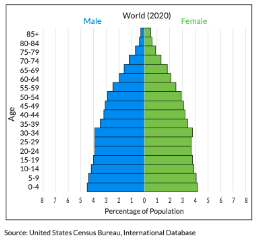
3. Answer the following comprehension questions in your book.
a. What is the largest age cohort and how can you tell?
b. What cohort makes up 4 percent of the global population?
c. Where are you represented on the pyramid? What percentage does your cohort represent?
d. Are there currently more old people or young people living on the planet? How can you tell?
4. What can you tell me about the shape of the world population pyramid and do you think the graph represents a population that is growing or shrinking and their reasoning.
5. This graphs differs because it shows the percentage of a population that falls within each reproductive category provides clues to the population’s future growth. As such, the shape of a population pyramid reveals a lot about how a population is growing.

Now what does this graphs tell you about the populations future growth.
6. Analyse the three sample population pyramids below.
• Graph 1: Expanding – Ethiopia. The triangular shape reflects a growing population. A significant percentage of people are in the pre-reproductive age groups. As those children age and enter their reproductive years and start having children of their own, the population will almost surely grow.
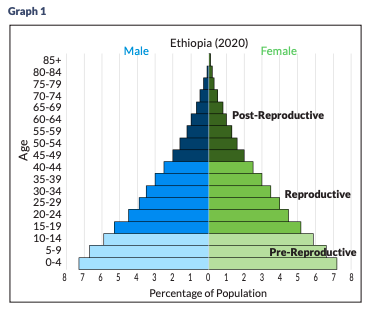
• Graph 2: Stable – New Zealand. The rectangular shape shows a stable population. There is a fairly even distribution of people across each age group. Generations are replacing each other so the population will not grow or shrink.
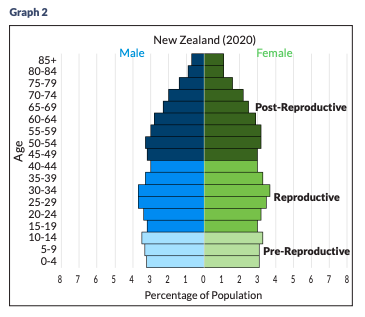
• Graph 3: Diminishing – Japan. The cup shape shows a shrinking population. The largest percentage of people are in their post-reproductive years and no longer having children. As fewer and fewer people reach reproductive age, the size of the population will decrease.
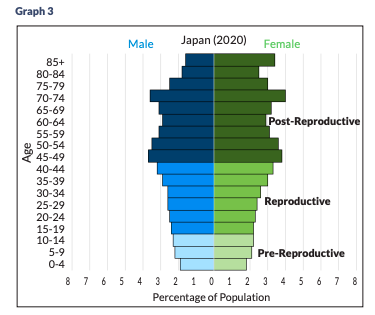
Part 2: Exploring Pyramids from Across the Globe
Procedure
1. Open the Student Worksheet and the Pyramid Graph Paper on Google Classroom and you will be assigned one of the six countries, work in pairs.
2. The figures on the Worksheet are the population of each age group within each sex for each particular country. In order to construct the country’s pyramid, students must first calculate the percentage of the population of each sex in each age group.
Example:
- According to the Worksheet, the total population of the United States in 2020 was 332,639,102.
- The population of U.S. males aged 0-4 was 10,445,659. 10,445,659 = .031 or 3.1% 332,639,102
- Complete these calculations for each cohort. (total population / total cohort)
3. Construct a population pyramid for their assigned country by graphing the percentage data onto the Pyramid Graph Paper.
Discussion Questions
1. Can you tell from the data if there are more male or female babies in each country?
2. Can you tell from the graphs which country has the most people?
3. Are there more elderly females or males?
4. If you had a business and wanted to capitalize on your information about the population age distribution for the United States, what would you sell and why? What about a business in Nigeria? A business in Germany? United States
5. Which of the six countries is growing the fastest? How do you know? Can you think of any other information we can infer from the pyramid shape?
6. Looking at the pyramids, which countries appear to have the slowest rates of population growth? How can you tell?
7. Which country would you suspect is closest to zero population growth?
8. What factors would change the shape of the pyramids in the future?
9. There are two noticeable “bumps” on the U.S. population pyramid. What do these larger cohorts correspond to?
10. China’s population pyramid is the most varied of the six. Can you think of any historic events from the past 85 years that helped shape the Chinese pyramid?
11. Which of the three general pyramid shapes would you use to describe India’s population pyramid? What does this mean for India’s future growth?
12. Compare and contrast the population pyramids of Nigeria and Guatemala. How are they similar/different and what does this mean for each countries’ future growth?
-
We have a very short term and will be focusing on the research task in preparation for our CAT test in a few weeks.
Check Google Classroom for CAT Preparation resources.
Attached is the information for our assessment.
Your assessment presentation MUST include:
Your information should be presented as Google Slides presentation or a poster including:- Title and Team Members
- Table of Contents
- Introduction of topic /ideaKey
- Vocabulary - at least 5 wordsLocation with Maps
- Cause of the Problem
- Impacts and consequences of this problem on people, the economy and the environment.
- How do local people respond to this issue.
- What is the government doing about this issue?
- Why do you think the problem is not resolved yet?
- What predictions do you have for the future if this trend continues?
- What actions would you take to address this issue?
- What recommendations / practical solutions would you suggest?Your views and conclusions.
- Bibliography
We will be presenting Week 3 from Wednesday to Friday.
Please Submit in Google Classroom -
REFLECT / WHAIWHAKAARO learning intentions:
- We are REFLECTING and preparing for our CAT in Week 4.
- We are CONCLUDING our FFR project and PRESENTING our findings to the class
We have a very short term and will be focusing on the research task in preparation for our CAT test in a few weeks.
Check Google Classroom for CAT Preparation resources.
Attached is the information for our assessment.
Your assessment presentation MUST include:
Your information should be presented as Google Slides presentation or a poster including:- Title and Team Members
- Table of Contents
- Introduction of topic /ideaKey
- Vocabulary - at least 5 wordsLocation with Maps
- Cause of the Problem
- Impacts and consequences of this problem on people, the economy and the environment.
- How do local people respond to this issue.
- What is the government doing about this issue?
- Why do you think the problem is not resolved yet?
- What predictions do you have for the future if this trend continues?
- What actions would you take to address this issue?
- What recommendations / practical solutions would you suggest?Your views and conclusions.
- Bibliography
We will be presenting Week 3 from Wednesday to Friday.
Please Submit in Google Classroom -
REFLECT / WHAIWHAKAARO learning intentions:
- We are REFLECTING and preparing for our CAT in Week 4.
- We are CONCLUDING our FFR project and PRESENTING our findings to the class
We have a very short term and will be focusing on the research task in preparation for our CAT test in a few weeks.
Check Google Classroom for CAT Preparation resources.
Attached is the information for our assessment.
Your assessment presentation MUST include:
Your information should be presented as Google Slides presentation or a poster including:- Title and Team Members
- Table of Contents
- Introduction of topic /ideaKey
- Vocabulary - at least 5 wordsLocation with Maps
- Cause of the Problem
- Impacts and consequences of this problem on people, the economy and the environment.
- How do local people respond to this issue.
- What is the government doing about this issue?
- Why do you think the problem is not resolved yet?
- What predictions do you have for the future if this trend continues?
- What actions would you take to address this issue?
- What recommendations / practical solutions would you suggest?Your views and conclusions.
- Bibliography
We will be presenting this week from Wednesday to Friday.
Please Submit in Google Classroom -
REFLECT / WHAIWHAKAARO learning intentions:
- We are REFLECTING and preparing for our CAT in Week 4.
- We are CONCLUDING our FFR project and PRESENTING our findings to the class
Information and resources are on Google Classroom
Revision of Ukraine Crisis
Activity 1: Introduce the Ukrainian Refugee Crisis
Read the background information:
On February 24, 2022, the Russian military invaded Ukraine, a country in Eastern Europe with a population of about 40 million people. The conflict has continued to escalate, and many civilians have been killed or forced from their homes due to the fighting, creating the fastest growing refugee crisis in Europe since World War II.1 Most of the refugees are entering Poland, with large numbers also crossing into other countries west of Ukraine: Moldova, Romania, Hungary, and Slovakia.2 As of March 8, 2022, half of the refugees fleeing Ukraine were children,3 and Ukrainian men between the ages of 18 and 60 have been ordered by their government to stay and fight.4 The UNHCR (the UN agency in charge of refugees) estimates that more than 4 million Ukrainians—10% of the population—will leave the country5 because of the Russian invasion.European governments and private citizens have mobilized to help Ukrainian refugees. For example, the European Union plans to allow Ukrainians to live and work in EU countries for up to three years,6 the Polish government is providing Ukrainians with healthcare and social assistance,7 and individual volunteers have assembled to provide free rides, food, and supplies.8
Then, view a selection of images of Ukrainian people fleeing the war from the Atlantic photo essay “Ukrainian Refugees Say Goodbye to Home and Family Members.”
Reflect in your exercise book on what you learned about the Ukrainian refugee crisis using the Head, Heart, Conscience strategy:
Head: What information did you learn from these sources about Ukrainians who were forced to flee their homes because of the war? What questions do you still have?
Heart: What emotions did these sources raise for you? Were there particular images that stood out to you? If so, why?
Conscience: Who should be responsible for helping Ukrainian refugees? According to the paragraph you read, what are some steps individuals and governments are taking to help Ukrainian refugees? What other ideas do you have about how people and governments can help refugees?
Activity 2: Explore the Choices People and Governments Make to Help Refugees
Activity 3: Reflect on How People Can Care for Themselves and OthersEuropean governments and individual volunteers have been stepping up in inspiring ways to aid Ukrainian people forced to flee their homes because of the war. This generosity should be celebrated. At the same time, it highlights the harsh treatment that refugees and migrants from non-European countries have at times faced in Europe. This activity is designed to help you think about the ways people are standing up to help Ukrainians while also exploring ethical questions around the differences in the reception that refugees and migrants from different backgrounds face in Europe.
Read one or both of the article excerpts in the reading Choices People and Governments Make to Help Refugees.
Once you have finished reading, discuss the questions. These questions are also located within the reading, below each excerpt.
Excerpt 1 Reflection Questions:
What does Godlewska-Jeneralska plan to do to help Ukrainians fleeing the war? Why did she decide to help?
According to the article, why do many Polish people feel close to Ukrainians? What are some other reasons people feel close to each other?
Why does Godlewska-Jeneralska believe it is “natural” to help Ukrainian refugees? Why might people feel a greater obligation to help those who feel geographically or culturally "close"?
What problems can it create when people prioritize helping those who feel geographically or culturally “close”?
Excerpt 2 Reflection Questions:
What assumptions do the politicians and the journalist quoted in this article make about refugees from non-European countries? What assumptions do they make about Ukrainian refugees? What do these assumptions say about who they think “belongs” in their countries?
The politicians and the journalist mentioned socio-economic class, religion, education, and physical appearance as significant aspects of refugee identity. Why do you think these factors shape the way people respond to refugees? Should they matter?
Choose one or more of the following prompts to discuss in small groups:
Godlewska-Jeneralska is prepared to host Ukrainian people fleeing the war in her own home. Can you think of other examples, perhaps from your own community, of people meeting a crisis with generosity?
Who in your own community might be feeling particularly vulnerable because of the war in Ukraine? What can we do to help those who feel vulnerable?
The news about the war in Ukraine and the humanitarian crisis is upsetting for everyone, and in particular for those who have a personal connection to Ukraine or the region. What steps can you take to care for yourself in the face of this crisis? (Some ideas include talking to someone you trust or limiting the amount of time you spend reading the news.)
Intolerance, fear, and existing stereotypes have shaped the extent to which many societies respond to refugees with empathy and support. What can we do to challenge these harmful attitudes and encourage more equitable responses?
-
FOCUS / ARONGA learning intentions:
- We are FOCUSING understanding the progress of Medicine through Time.
- We are FOCUSING on celebrating the progress of Medicine through Time.
See resources in Google Classroom
Medicine in Ancient Greece (title)
Brainstorm of knowledge of any aspect of Ancient Greece,
Complete the activities from the Ancient Greece worksheet relating to Hippocrates and Asclepius.
Medicine in Ancient Rome
Brainstorm of knowledge of any aspect of Ancient Rome
Galen: Watch the Ted Ed talk on “Ancient Rome’s Most Notorious Doctor” https://www.ted.com/talks/ramon_glazov_ancient_rome_s_most_notorious_doctor?language=en
Explain why Galen is important in the history of medicine
Source Work
- Use the sources in the document “Were Hippocrates ideas about medicine important?”
- There is a mark scheme for these questions which is attached – any questions let me know
- Discuss questions with the students and then allow them time to write an answer
- Try to complete Q1,2,4,6 & 7 (time allowing)
Roman Public Health
Define public health
List examples in 2022
Research five examples of Roman public health – do as a picture gram
Why do you think the Romans were interested in public health
-
FOCUS / ARONGA learning intentions:
- We are FOCUSING understanding the progress of Medicine through Time.
- We are FOCUSING on celebrating the progress of Medicine through Time.
